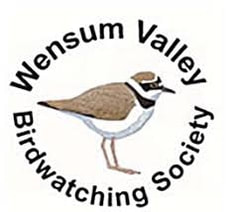|
Speaker: Simon Gillings Reporter: Sue Gale On 17th September our Chair, Keith Walker, welcomed Simon Gillings of the BTO to Zoom. Our second Zoom talk delivered by a guest speaker was every bit as successful as the first. Simon has been with the BTO since the mid-1990’s and before that did his first degree and PhD at UEA so he is a real local. He talked to us about the study of birds flying by night using recordings of their vocalisations, known as ‘nocmig’. This technique requires only a small expense and enables birders to experience night-time migration from their own homes or gardens. The technique has been popular in the USA for a long time, but they have the advantage that their migrating warblers tend to call as they fly over, whereas ours do not (It would be great if someone could find an explanation for that). In this country the work of Sound Approach has brought it to the general public. So what equipment do you need? Any digital recording device will work, even your smartphone, together with a computer on which to look at the recordings in the morning. So you can leave the recorder on all night and download the calls as sonograms as well as audible calls. This is where the work starts, and a familiarity with the calls of the birds you are hoping to record would be very helpful. The system will of course record everything – road noise, neighbours moving about etc. The operator can soon recognise these background
noises and learn to ignore them. More sophisticated equipment is available of course and Simon recommended a Zoom H4N Pro recorder at around £150 for a start. Simon now uses a parabolic microphone and an Audio-Moth. So which species might you record? The answer seems to be almost anything, but the most well-known are Redwings, that many of us will have heard flying over our gardens in large numbers at migration time. Some examples of other species that arrive in numbers in spring are the various summer visiting warblers, of which 350 million arrive in Europe at night, plus 30 million Flycatchers and 2 million Crakes and Rails. Many species use the same flight calls at night as they do in the day, which is helpful for those who know their calls! Simon showed examples of sonograms and how to interpret them, and a recording of his talk is available for those who would like the detail. He hears a Moorhen most spring/summer nights, which surprised him at first, as he records in a busy urban area in Cambridge. So never rule anything out. The website Xeno Canto is excellent for matching the calls you record to species. So what can we learn from this? Because there are large numbers of birders recording calls in a standardised way, and logging their results, a big database is being built up. Things like which time of day certain species are most likely to fly over, and also what time of year can be determined. On a continental scale we can clarify much detail about migration. For the local observer it complements daily records, often adding scarce birds to local lists. The results also throw up questions, such as why the Ortolan Buntings and Tree Pipits are much more likely to be recorded in Autumn than in Spring? Do brightly-lit cities attract more migrants? It seems that New York has been shown to attract birds which fly in and then die! Would Norwich be large and bright enough to have the same effect? And why were so few Little Ringed Plovers recorded this year when there were many more in the previous two years? Allan Hale asked if weather had an effect. Simon replied that the best nights for recording are overcast and damp, because the birds tend to fly at lower altitudes. It doesn’t mean there are more migrants, but they are easier to detect. Keith thanked Simon for a fascinating and informative presentation.
0 Comments
Leave a Reply. |
Please feel free to read through our reports from our monthly indoor / online meetings. Archives
May 2024
Categories |

 RSS Feed
RSS Feed
